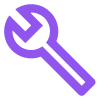What does your performance management system cover? A good system is the basis for fairly assessing and further developing employee performance.
In this blog, you’ll discover what components Performance Management consists of so you can apply it to improve employee performance.
💡 Are you looking for HR solution where you can track all these components? Check out our fair performance management software
What is a performance management system?
Performance management consists of the ongoing process and all conversations in your HR cycle by which you evaluate employee performance and coach them to further improve their work.
A performance management system helps you to:
- Set clear goals
- Measure employee performance and provide targeted feedback
- Develop skills
- Adjusting behavior
The 11 key components of a performance management system
1. Job and competency profiles.
By job profiles using clear goals, competencies and skills, as an employer you can make your expectations transparent. This will prevent ambiguities and give you a better understanding of how to use the talents in your organization in the smartest way.
💡 Tip: Set up your job profiles automatically using AI in our software for a job house.
2. Setting organizational goals
The second part of Performance Management is setting clear goals. Because it only makes sense to improve employee performance if those improvements contribute to the same, larger goal. It motivates employees and keeps them engaged when they understand what their work contributes to.
Therefore, it is important to set individual goals that are aligned with your organization’s strategic goals.
You can set up goals in the form of:
- targets or critical performance indicators (KPIs)
- specific skills or competencies That employees can further develop
3. Set up feedback process
Create a culture of continuous learning by giving employees regular feedback. This encourages growth and helps make timely adjustments. You can easily track feedback in a Performance management software tool..
4. 360-degree feedback
At the heart of improving colleagues’ performance, is to give them ongoing feedback on their skills, based on concrete behaviors.
You do this by 360-degree feedback employ and use multiple perspectives, such as colleagues, supervisors and customers, to get a complete picture of an employee. This will give you objective insight into employee performance.
5. Conduct developmental interviews
Put the focus on learning and growing rather than just assessing. Development conversations Provide space to discuss personal and professional goals.
6. Performance and development plans
By working with the employee to create a plan that describes their goals and development needs, you can create a roadmap for growth and success.
7. Provide training and education
Provide opportunities for employees to further develop their skills. This can be done through in-service training and Learning and development, such as external courses or internal coaching.
The more an employee grows, the better the organization performs.
8. A fair compensation structure
When you link performance to rewards such as bonuses, promotions and other incentives, you ensure transparency, trust and motivation within the team. Read more about how to honestly evaluate performance here
9. Talent reviews
To minimize subjective judgments, you can use succession planning. That way, you always know which talent has the most potential for advancement. And furthermore, if an evaluation by a specific manager deviates from the potential you see in an employee, it stands out. So you can keep assessments objective
10. Performance dashboards
Provide insightful overviews where employees can track their progress. This makes it easier to reflect and improve performance.
11. Exit interviews
Gather valuable feedback from departing employees with an exit interview. Their input can help further improve your Performance Management cycle.
💡 Want to get the most out of your performance management system? Then also read our blog: Here’s how to set up your evaluation cycle smartly and fairly. Here you’ll find practical tips and examples to take your HR strategy to the next level.




























